Classic Space never went away for some of us, then, but for many it's taken the events of this year to remind them of its delights, or indeed to introduce it for the first time. In honour of this I thought I'd take a walk along memory lane and review another of the old Classic Space, um, classics - Set 918 One Man Space Ship, referred to by some sources as Set 918 Space Transport.
At just 23 cm wide by 14 cm tall by 4 cm deep the box is ultra slim and extremely compact. I assume that when new the set was shrink-wrapped in cellophane; alas my copy of the set was pre-owned when I bought it so I can't say for sure. The outer box is actually a slipcase, the front of which you can see above; this slides off to reveal an inner box which holds the pieces. The front of the slipcase carries a less than pin-sharp image of the set contents superimposed on a blurry starfield with a nearby planet top left and a barren lunar-like surface below. In addition to that we get the LEGO logo, the set number, and that's it; the 6+ age recommendation is relegated to one of the sides of the box and the set name is nowhere to be found. The rear of the slipcase (below) features photographs of a bunch of alternate builds which can be assembled using elements contained within the set. As stated in previous reviews I wish LEGO would provide such inspiration to today's builders, but the current fashion is to highlight play-features of the modern day sets on the back of the box instead.
Removal of the slipcase reveals the appropriately decorated inner box (below) which features double-walled sides and is adorned with a star-field pattern reminiscent of the front of the slipcase. Unfortunately the double walls reduce the space available for the pieces, so that when they're bagged up it's hard to slide the slipcase over them.
The cover of the instruction booklet, which looks pretty much the same as the front of the slipcase, can be seen below; I say 'booklet' but it's actually a single sheet measuring around 27 cm x 54 cm which is folded up into an approx. 13.5 cm x 13.5 cm square for storage. Unfolding the sheet reveals the clear and easy-to-follow building instructions which break the build into just 12 steps.
The building instructions take up almost all of the available space, with the two remaining panels being taken up by the cover art (above) and a diorama (below - click to enlarge) featuring a clutch of Classic Space sets. The same diorama picture also appears in the instruction leaflet for Set 894 Mobile Ground Tracking Station.
You can see selection of rare and/or interesting elements which can be found in the set in the picture below (click to enlarge). The blue 1 x 4 brick with the printed LL918 pattern is unique to this set, as is the light grey 1 x 4 brick with printed Homemaker stove switch pattern. The trans yellow 4 x 6 plate only appears in this and one other set, while the blue 33 degree 3 x 6 slope printed with the Classic Space logo and the light grey left and right 1 x 3 x 1 doors appear in a total of 5 sets. The trans yellow 33 degree 3 x 6 slope is a Classic Space staple and appears in a total of 9 sets. The other elements in the picture - the light grey stand, tail and 1 x 1 modified brick with positioning rockets, and the blue 2 x 2 - 2 x 2 bracket - are more commonly available, having initially appeared in the Classic Space sets and then subsequently been used in other themes.
It's hard to convey the excitement that I and other young LEGO fans felt back in the day when we were confronted with the Classic Space part and colour palette, some of which you can see above. To put things into context, up until the appearance of the Classic Space sets, the LEGO building experience had largely consisted of the use of basic elements in red, yellow, blue, white and black plus a smattering of trans clear elements, some light grey and green baseplates, and a few green trees. Then I opened my first Classic Space set and my senses were assaulted by trans yellow bricks, plates and slopes, small trans green and trans red plates and round bricks, light grey wedge plates, cones, positioning rockets, aircraft tails, stands and other exotica, and minifigures wearing space suits and carrying air tanks and radios. OK, so maybe if you weren't there you'll be scratching your head right now wondering what all the fuss was about, but trust me - at the time it felt like my LEGO world had been turned upside down, and for the better.
The set contains just one minifigure, but what a minifigure ! This red incarnation of probably LEGO's best-loved minifigure design of all time might look simple by today's standards but he's no less beautiful for that. Mine has managed to avoid one of the common Classic Space minifigure pitfalls, that of the cracked helmet strap lovingly parodied by Benny in the LEGO Movie, but as you can see in the picture above he's unfortunately fallen victim to the other - fading of his torso print; you can see what his torso print would have originally looked like here. His head has the standard grin pattern and isn't backprinted. You can get a good look at his airtanks in the picture below; this part first appeared as part of the Classic Space sets, and the same design is still in use to this day. This red version of the Classic Spaceman appeared in a total of almost 50 sets all told between 1978 and 1986.
The build is predictably simple - literally a matter of just a few minutes - and you can see the finished model below (click to enlarge). It seems incredible that a set as small and quickly-assembled as this could be considered so ground-breaking, but you need to remember that pre-1978, LEGO models utilised basic bricks, slopes and plates; the appearance in 1978 of wedge plates and other more specialised elements, plus the expanded colour palette, revolutionised design possibilities and gave us LEGO spaceships which at the time seemed impossibly sleek and desirable. Many of the new elements are immediately evident - the blue 33 3 x 6 slope with the iconic Classic Space logo, the trans yellow windscreen and 4 x 6 plate which forms the cockpit roof, and the light grey wedge plates, positioning rockets and tail to name just a few.
From behind you can see the large light grey cone, another of the new elements ushered in by the Classic Space revolution, and it's attached to the rear of the ship by the blue 2 x 2 - 2 x 2 bracket. The rear of the ship tapers neatly thanks to the use of more wedge plates.
As you can see from the picture below, there's more than enough space inside the cockpit for our Classic Spaceman; he sits behind a steering wheel and the light grey 1 x 4 brick with printed Homemaker stove pattern mentioned earlier which is used a a control panel. The trans yellow cockpit roof is attached via a pair of hinges on the right of the cockpit and it opens to provide cockpit access. The only other moving parts are the pair of light grey 1 x 3 x 1 doors on either side towards the rear of the craft.
In summary, Set 918 One Man Space Ship was released in 1979 and contains 81 parts; it appears to have only been released in Europe, Australia and Canada. It was one of a small, select group of much-loved and groundbreaking sets which were literally the start of an era, and whose appeal has IMHO deservedly endured to the present day. Old it may be, but I think this set has retained its charm in spades - great to look at, and also eminently swooshable. The enduring popularity of Classic Space sets in general is reflected in the aftermarket prices. At time of writing there are only 10 examples of this set listed for sale on Bricklink of which only 2 are boxed; the only used boxed example will set you back over £100 plus shipping, and if you want a mint, sealed copy then prepare to shell out almost £1,000 / US$1,500 for the privilege.... The set does periodically come up on eBay - that's where I got my copy a few years back - so keep your eyes peeled and you may get lucky.
The set contains just one minifigure, but what a minifigure ! This red incarnation of probably LEGO's best-loved minifigure design of all time might look simple by today's standards but he's no less beautiful for that. Mine has managed to avoid one of the common Classic Space minifigure pitfalls, that of the cracked helmet strap lovingly parodied by Benny in the LEGO Movie, but as you can see in the picture above he's unfortunately fallen victim to the other - fading of his torso print; you can see what his torso print would have originally looked like here. His head has the standard grin pattern and isn't backprinted. You can get a good look at his airtanks in the picture below; this part first appeared as part of the Classic Space sets, and the same design is still in use to this day. This red version of the Classic Spaceman appeared in a total of almost 50 sets all told between 1978 and 1986.
The build is predictably simple - literally a matter of just a few minutes - and you can see the finished model below (click to enlarge). It seems incredible that a set as small and quickly-assembled as this could be considered so ground-breaking, but you need to remember that pre-1978, LEGO models utilised basic bricks, slopes and plates; the appearance in 1978 of wedge plates and other more specialised elements, plus the expanded colour palette, revolutionised design possibilities and gave us LEGO spaceships which at the time seemed impossibly sleek and desirable. Many of the new elements are immediately evident - the blue 33 3 x 6 slope with the iconic Classic Space logo, the trans yellow windscreen and 4 x 6 plate which forms the cockpit roof, and the light grey wedge plates, positioning rockets and tail to name just a few.
From behind you can see the large light grey cone, another of the new elements ushered in by the Classic Space revolution, and it's attached to the rear of the ship by the blue 2 x 2 - 2 x 2 bracket. The rear of the ship tapers neatly thanks to the use of more wedge plates.
As you can see from the picture below, there's more than enough space inside the cockpit for our Classic Spaceman; he sits behind a steering wheel and the light grey 1 x 4 brick with printed Homemaker stove pattern mentioned earlier which is used a a control panel. The trans yellow cockpit roof is attached via a pair of hinges on the right of the cockpit and it opens to provide cockpit access. The only other moving parts are the pair of light grey 1 x 3 x 1 doors on either side towards the rear of the craft.
In summary, Set 918 One Man Space Ship was released in 1979 and contains 81 parts; it appears to have only been released in Europe, Australia and Canada. It was one of a small, select group of much-loved and groundbreaking sets which were literally the start of an era, and whose appeal has IMHO deservedly endured to the present day. Old it may be, but I think this set has retained its charm in spades - great to look at, and also eminently swooshable. The enduring popularity of Classic Space sets in general is reflected in the aftermarket prices. At time of writing there are only 10 examples of this set listed for sale on Bricklink of which only 2 are boxed; the only used boxed example will set you back over £100 plus shipping, and if you want a mint, sealed copy then prepare to shell out almost £1,000 / US$1,500 for the privilege.... The set does periodically come up on eBay - that's where I got my copy a few years back - so keep your eyes peeled and you may get lucky.
For more Classic Space goodness you might want to check out my review of Set 894 Mobile Ground Tracking Station or read some of my related ramblings here and here. Further Classic Space reviews to come in due course - it's always a pleasure to look back at these sets !


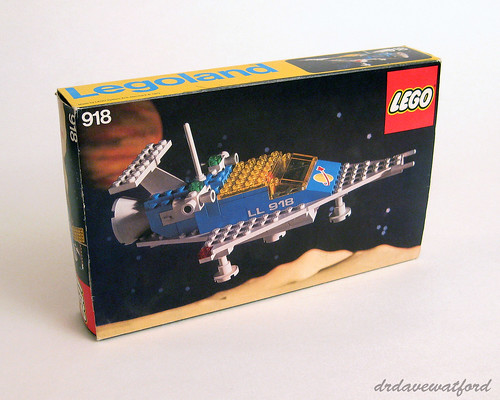
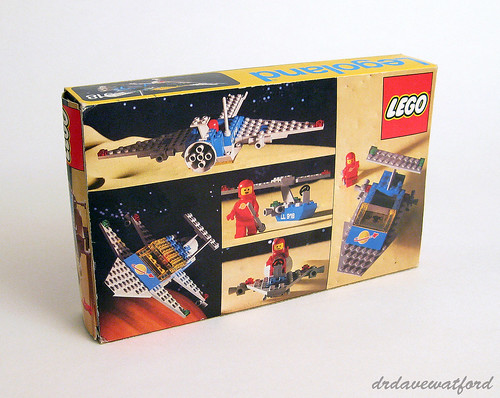
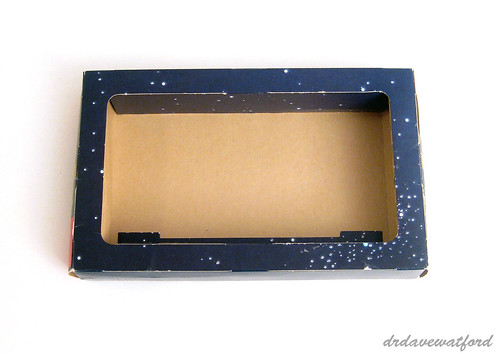
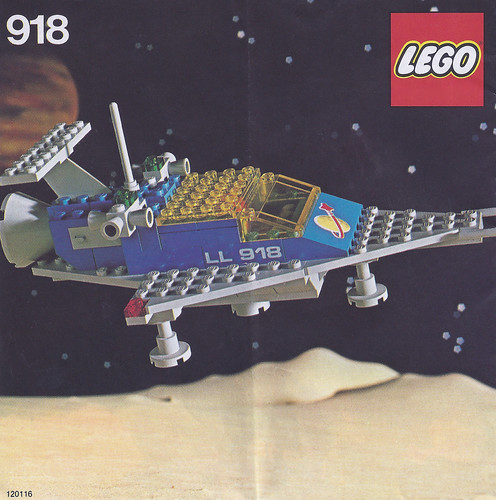

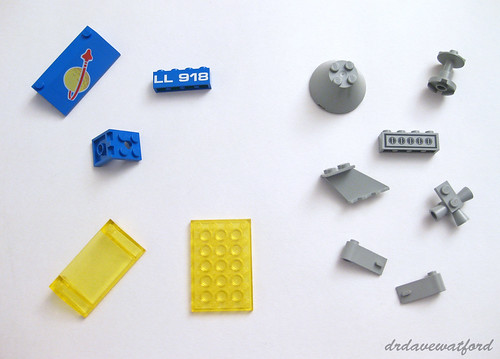
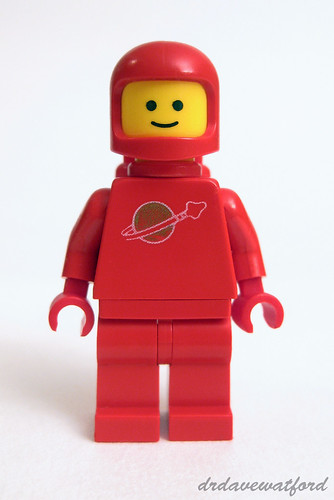
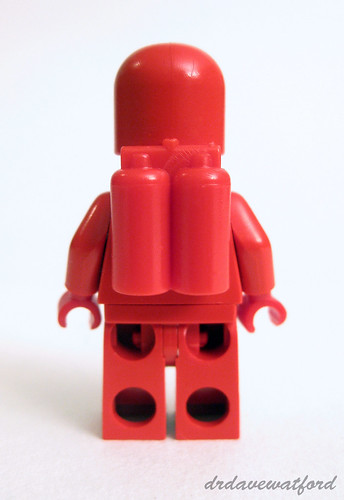
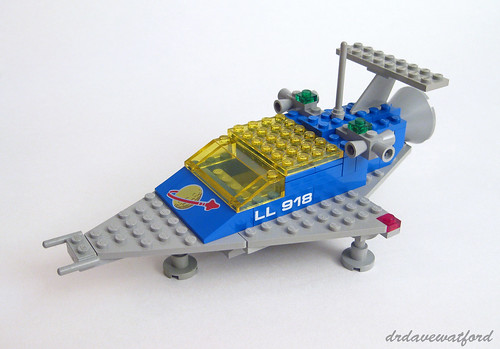
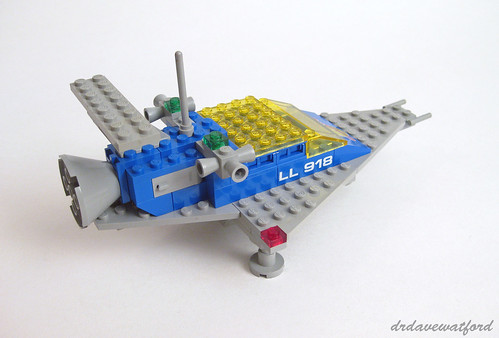


Hi, excellent review! I just picked up a brand new, never opened one. I can send you pictures. I was wondering how much this set would be worth? dan_kowcun@hotmail.com
ReplyDeleteNice ! No new, sealed examples of the set have been sold on Bricklink or eBay's UK site over the past 6 months, but one was sold on the US eBay site for a little over $1,000 back in July 2012. Getting that kind of money is obviously dependent on the right person seeing your listing at the right time, however, and if you're desperate to sell then you might want to shoot a bit lower. Good luck !
DeleteThere's a nice take on this set which its author called the 916. Pretty little ship, IMHO :-)
ReplyDeletehttp://www.holly-wood.it/building_instructions/bi_916-en.html
Loved to look at the picts. Many thanks! I had one (my first space set) where the space logo for the minifig was a sticker. The Xmas before I had the perfect 911 universal set which was of great use to build bigger ships, thanks to the many blue pieces...
ReplyDelete